9 Nights / 10 Days
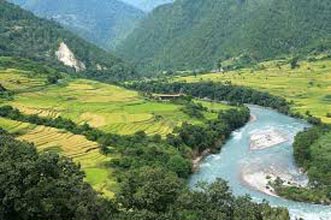
After arriving at Paro International Airport, you will be welcomed by your dedicated certified guide, and after immigration & baggage collection you will proceed to your hotel in Thimphu, capital of Bhutan. After refreshment you will start your trip according to below itinerary with certified guide and dedicated vehicle.
National Memorial Chorten
Memorial chorten has been designed to present it as “one of the most visible religious structures in Thimphu”. The Memorial Chorten, in the heart of the city, is designed is a Tibetan style chorten, also called as the Jangchup Chorten, patterned on the design of a classical stupa. The feature that is distinct here is the outward flaring of the rounded part to give the shape of a Vase, unlike a dome shape. National Memorial chorten is an extraordinary example of Buddhist architecture and artwork with its gorgeous paintings and intricate sculptures. You will find elderly Bhutanese people circumambulating this throughout the day.
Tashichho Dzhong
It is a Buddhist monastery and fortress in the city of Thimphu Bhutan, on the western bank of the Wang Chu River. This was built in 1641 Zhabdrung Ngawang Namgyal acquired it but finding it too small, he built another one, known as the lower Dzong. Tashichho Dzong has been the seat of the government since 1952 and presently houses the throne room and offices of the king, the secretariat and the ministries of home affairs and finance. Overnight Hotel in Thimphu
Changangkha Lhakhang
This is an old fortress like temple and monastic school perched on a ridge above Thimphu, south east of Motithang. It was established in the 12 century on a site chosen by Lama Phajo Drukgom Shigpo, who came from Ralung in Tibet. The Central statue is Chenresing in a 11-headed manifestations, and the books in the temple are larger in size than usual Tibetan texts. Here are large prayer wheels inside the monastery and small wheels on the walls outside the monastery. Please assure you have a special permit to enter in to this monastery, otherwise you can have a excellent view of Thimphu from the courtyard.
Takin preserve National Park
Motithang Takin (National animal) Preserve National park is located in the Motithang in Thimphu, a wildlife reserve area for Takin. This was started as a mini zoo, later the King of Bhutan felt that it was improper for a Buddhist country to confine animals for religious and environmental reasons. He therefore ordered the release of the animals and the closure of the mini-zoo on converted into a preserve. The reason for declaring takin as a National Animal of Bhutan on 25 November 2005 (Budorcas taxicolor) is attributed to a legend of the animal’s creation in Bhutan in the 15th century by Lama. The preserve also holds a few sambar and barking deer.
Sangaygang View Point
Sangaygang is located north west of the Thimphu Valley and famous for the dating and taking a walk around the blue pines. Sangaygany is the most heard place with the lovers around the Capital City of Thimphu, as the lovers and people of all kind rush towards the top of the hills, their feeling and sentiment changes watching the picturesque Thimphu Valley from a point as when in evening, you get to see the sun closest the Thimphu valley and the lovers or people just feel warmth inside their heart. You go there, get yourself refresh from the routine life or to ease the tension or just take your loved one or with family in cool evening of the Thimphu breeze.
Overnight Hotel in Thimphu
Kuensel phodrang (Buddha Point)
Buddha Dordenma is massive statue of Shakyamuni measures in at a height of 51.5 meters, making it one of the largest statues of Buddha in the world. The statue is made of bronze and is gilded in gold. 125,000 smaller Buddha statues have been placed within the Buddha Dordenma statue, 100,000 8 inch tall and 25,000 12 inch tall statues respectively. Each of these thousands of Buddhas has also been cast in bronze and gilded. The throne that the Buddha Dordenma sits upon is a large meditation hall.
The Buddha Dordenma is located atop a hill in Kuensel Phodrang Nature Park and overlooks the Southern entrance to Thimphu Valley. The statue fulfills an ancient prophecy dating back to the 8th century A.D that was discovered by Terton Pema Lingpa (Religious Treasure Discoverer) and is said to emanate an aura of peace and happiness to the entire world.
Royal Botanical Garden
The Royal Botanical Garden at Serbithang is a few minutes’ drive away from Thimphu town and a perfect place to visit Bhutan during spring and summer. Various types of flowers and medicinal plants populate the park and is ideal for a picnic lunch. In the spring season the park comes alive with beautiful and colorful flowers in bloom. Located on a side of a hill, the park offers a great view of Thimphu valley. The landscape of Bhutan is dotted with numerous Lhakhangs, temples, monasteries, stupas, prayer wheels and colorful prayer flags. Each one of them with its common function and purpose as a religious center and congregation during auspicious days. Built over the years, each Lhakhang and temple has its own unique story and history abounding in mystical and supernatural phenomenon.
Weekend market – Thmphu
The Weekend Market occupies stalls on both banks of the Wang Chhu, just north of Changlimithang Stadium. Vendors from throughout the region start arriving on Thursday and Friday, and remain until Sunday night. You can buy wooden bowls, mala beads, printing blocks, amulets, yak tails and prayer wheels, some of which are made in Nepal.
Overnight Hotel in Thimphu
Dochula Pass
Dochula Pass known as the Druk Wangyal Chortens- the construction of these 108 chortens was commissioned by the eldest Queen Mother, Her Majesty Ashi Dorji Wangmo Wangchuk. The pass is also popular spiritual destination for both locals and tourists because an important (Druk Wangyal Lhakhang) temple is located on the crest of Dochula pass. It offers a stunning 360 degree panoramic view of Himalayan mountain range. The view is especially scenic on clear, winter days with snowcapped mountains forming a majestic backdrop to the tranquility of the 108 chortens gracing the mountain pass. Bhutanese families enjoy visiting the pass during holidays and weekends to picnic and simply enjoy the scenery. For tourists this is ideal location to capture beautiful pictures of Himalayan mountain range during clear, warm days.
Chimi Lhakhang Temple
Chime Lhakhang is a Buddhist monastery in Punakha, stands on a round hillock. The monastery is the repository of the original wooden symbol of phallus that Kunley brought from Tibet. This wooden phallus is decorated with a silver handle and is used to bless people, who visit the monastery on pilgrimage, particularly women seeking blessings to be get children. The Chime Lhakhang square in shape with a golden spire. It is a golden yellow roofed building. It has a row of prayer wheels and its exterior walls are embedded with slates carved with images of saints. Near the entrance to the Lakhang, there is this small chorten which marks the location where the demoness was subdued by Lama Kunley. The prayer hall inside the monastery has tantric paraphernalia, thangkas, bells, drums, horns, dorjis and a kangd. The statue of Kunley, in a monk’s robe, is centrally located at the altar here; in a reclining position with a ceramic statue of his dog Sachi. Women who come to the monastery seeking blessings of children get hit on the head by the presiding Lama with a ivory, wood and bone phallus.
Overnight Hotel in Punakha
Jigme Dorji National park
The Jigme Dorji National Park is the second – largest national park of Bhutan. It occupies almost the entire Gasa District, as well as the northern areas of Thimphu District, Paro District, Punakha and Wangdue Phodrang Districts. It was established in 1974 and stretches over an area of 4300 square km. It is sanctuary for 37 known species of mammals including several endangered, threatened or vulnerable species, such as the takin, snow leopard, clouded leopard, Bengal tiger, bharal or Himalayan blue sheep, black musk deer, Himalayan black bear, red panda, dhole or Indian wild dog, and spotted linsang. It is also home to the Indian leopard, serow, sambar, barking deer, goral, marmot, pika and more than 300 species of birds. It is also the only park in Bhutan where the national animal (takin), flower (blue poppy), bird (raven) and tree (cypress) exist together. Most of Bhutan’s most popular trekking routes can be found inside the Jigme Dorji National Park.
Punakha Dzong
It is also the country’s most beautiful Dzong. It is the winter residence of Bhutan’s Central Monastic Body led by HH the Je Khenpo. Punakha Dzong was the administrative Centre and the seat of the Government of Bhutan until 1955, when the capital was moved to Thimphu. Punakha Dzong is built at the confluence of Pho Chhu & Mo Chhu Rivers and is an especially beautiful sight on sunny days with sunlight reflecting off the water onto its white-washed walls. Punakha Dzong is notable for containing the preserved remains of Zhabdrung Ngawang Namgyal, the unifier of Bhutan as well as a sacred relic known as the Ranjung Karsapani. The wedding of the King of Bhutan, Jigme Khesar Namgyel Wangchuck, and his fiancé, Jetsun Pema, was held at the Punakha Dzong, on 13 October 2011.
Overnight hotel in Punakha
Gangtey Gompa (Monastery)
The Gangtey Monastery generally known as Gangtey Gompa, is an important monastery of Nyingmapa school of Buddhism. It is located in the Wangdue Phodrang District in central Bhutan, is perched a top a small hill that rises from the valley floor. The Monastery is surrounded by a large village inhabited mainly by the families of the 140 Gomchens who take care of the Monastery. In winter this families, together with the monastery’s ten monks, move away to another monastery, a day’s walk to the south. Gangtey, which is now controlled by the government, is the only Nyingmapa monastery on the western side of the Black Mountain’s and is also the biggest Nyingmapa monastery in Bhutan. It is directed by Gangtey Tulku, the ninth reincarnation (Tulku) to bear that name. Gangtey was founded by Pema Trinley, the grandson of Pema Lingpa, the famous Nyingmapa saint of Bhutan. Pema Lingpa visited this area and predicted that a monastery would be established by one of his descendants near the summit (tey) of a mountain (gang). Thus, in 1613, Pema Trinley establishes the monastery and became the first Gangtey Tulku. The religious traditions of Pema Lingpa still taught there. The second Tulku, Tenzin Legpa Dondrup (1645 to 1726), enhanced the size of Gangtey while keeping up good relations with Drukpas, and rebuilt the monastery in the form of a Dzong.
The Phobjikha valley
The Phobjikha Valley is a vast U-shaped glacial valley, also known as Gangteng Valley, where the black-necked cranes – visit central Bhutan to roost, circling the monastery three times on arrival and repeating this circling when returning to Tibet. Black-necked cranes in Bhutan are winter visitors during late October to mid-February to the Phobjikha Valley as well as Ladakh, India, and Arunachal Pradesh, India. They arrive from the Tibetan Plateau, where they breed in the summer. The phobijikha valley is popular for its scenic splendor and cultural uniqueness. The valley is rich in faunal biodiversity and has, apart from the globally threatened black-necked cranes Grusnigricollis, 13 other globally threatened species the valley is enclosed by the mountain ranges, which experience snowfall.
Overnight hotel in Gangtey
Rimpung Dzhong
The construction of the Rinpung Dzhong (Paro Dzong) began in 1644 on the order of Zhabdrung Ngawang Namgyal, the unifier of modern-day Bhutan. Unlike most of the other dzongs in Bhutan, it survived the massive 1897 earthquake though it was damaged by fire in 1906. Paro Dzong’s full name is Rinpung Dzong, which means ‘the fortress of the heap of jewels’. The approach toward the Dzong is through a traditional covered bridge called the Nemi Zam. A paved stone path runs alongside the imposing outer walls of the structure. The valley’s annual springtime religious festival called the Paro Tsechu is organized each year in the courtyard of the dzong and is attended by tourists from all over the world.
Overnight hotel in Paro
Tiger Nest Monastery Hike
Tighter Nest Monastery (Taktsang Lhakhang) is Bhutan’s most iconic landmark and religious site. The name Taktsang translates to “The Tiger’s Nest”. This temple is one of the most holy sites in the kingdom. It is believed that Padmasambhava (Guru Rinpoche) flew to this location from Tibet on the back of a tigress from Khenpajong. This place was consecrated to tame the Tiger demon, was first built in 1692 at a cave where Guru Rimpoche meditated in a cave, in the 7th century A.D. for 3 years, 3 months, 3 days and 3 hours in order to subdue evil demons residing within it. The cave has been considered a sacred site ever since and many famous saints have travelled to meditate in it.
In order to arrive at the temple you must trek for around 2-3 hours through beautiful, shady pine forests that is colorfully festooned with moss and prayer flags. On many days, clouds shroud the monastery and give an eerie feeling of remoteness. No trip to Bhutan would be complete without a visit to this remarkable heritage site.
Kyichu Lhakhang
Kyichu Lhakhang was originally a small structure at the time of its establishment in the 7th century by the Tibetan Emperor Songtsän Gampo. It is considered to be one of the 108 border taming temples he built. It is believed the temple was visited by Padmasambhava in the 8th century and he concealed many spiritual treasures here. Further the temple was looked after by the Lhapa Kagyu tradition and that during the 13th century it was handed over to a descendant of Phajo Drugom Zhigpo’s son Nyima. There is a belief that the two orange trees in the courtyard of Kyichu Lhakhang bear fruit throughout the year.
Overnight Hotel in Paro
Haa valley is located about 3 hours west of Paro. The Drive from Paro to Haa valley takes you up to the Chele-La pass which is located at a height of about 3800 meters. Make sure you ask you drive to stop the car here so you can enjoy a beautiful view of Bhutan’s 2 highest and best known peaks the Jichu Drake and Mount Jumolhari, some times of a clear day you might be able to catch a glimpse of Mount Kunchenjunga the 3rd highest mountain in the world from this view point. From there we will descend down into the Haa Valley down to the town of Haa.
The Haa valley is one of the most isolated and least populous districts of the country. The Haa valley is also home to a Indian army base that helps protect the border of Bhutan from Chinese incursions. There are many small temples and monasteries in the district with the most important being the Lhakhang Karpo( White Temple) and the Lhakhang Nagpo ( Black Temple). The Lhakhang Nagpo’s central shine is said to be identical to the central shrine of the Jowo Temple in Lhasa, Tibet. Legend has it that the Karpo temple was constructed along with the assistance of the Local deities, as a result of this divine intervention it was known as the Hay (Surprises in Dzongkha) and later on Haa. After spending the day in the valley we will return back to Paro for the night.
Local Market
Local market of Paro to shop and to take home gifts, Bhutan offers a variety of goods that revolve mainly round textiles. You may shop for items like hand-woven textiles that is either in raw silk or silk, carved masks of various animals, woven baskets of cane and bamboo, wooden bowls known as Dapas, handmade paper products or finely crafted gods of silver. You can also shop for thangkha paintings and Bhutan’s exquisite postage stamp. One can come across these items in the many handicraft shops in and around and also in major towns. Please remember that buying and selling of antiques is strictly forbidden in Bhutan.
Overnight Hotel in Paro.
Today your trip is over and after breakfast your guide will take you to Paro International Airport to board your departure flight, and you return back with lots of good memories.
We Orange Valley Tours & Travel Agency, we are focused on providing Tour & Travel services with the highest levels of customer satisfaction – we will do everything we can to meet your expectations.
With a variety of offerings to choose from, we’re sure you’ll be happy traveling with us. If you have any comments, questions, or if you are interested to do your tour with our agency, please feel free to contact us. Read More...
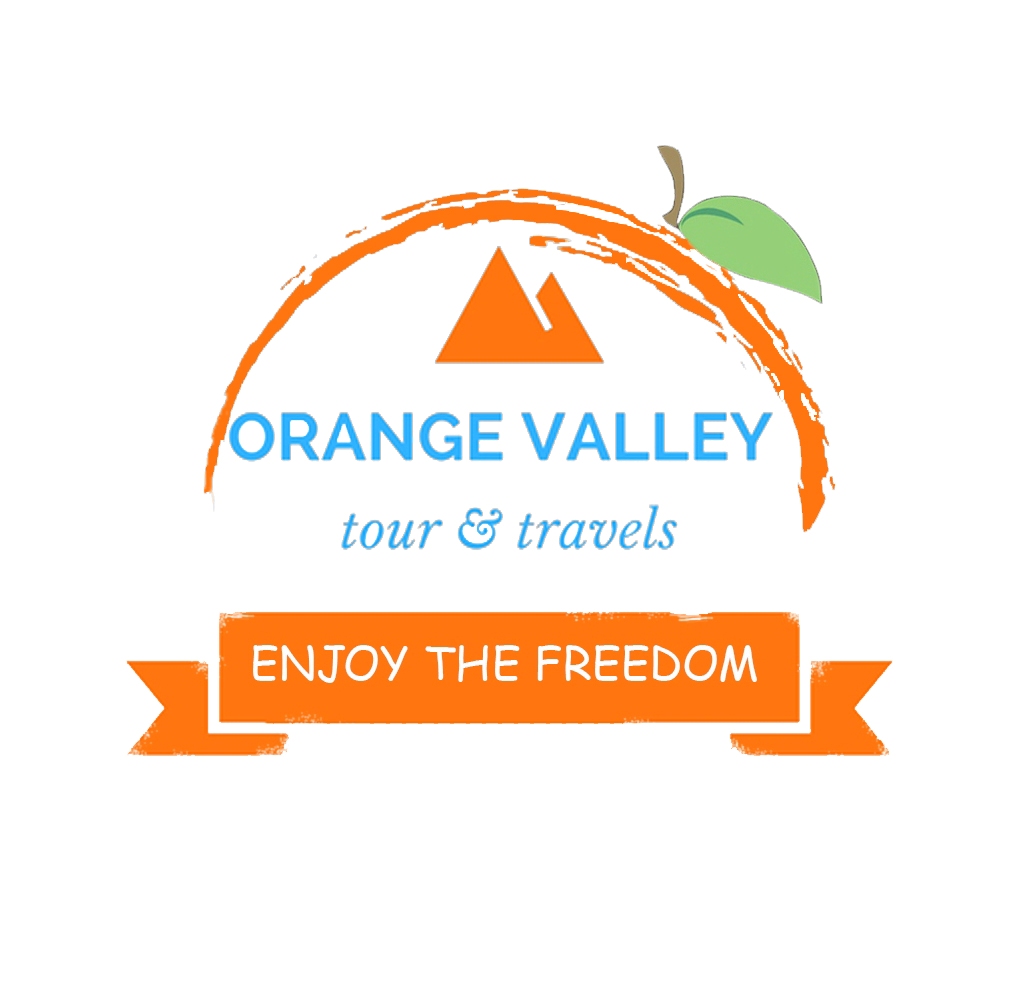
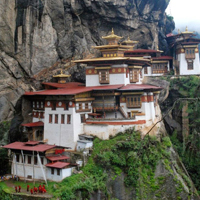 6D/5N
6D/5N
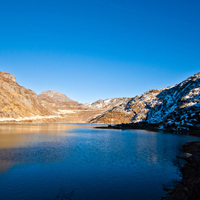 8D/7N
8D/7N
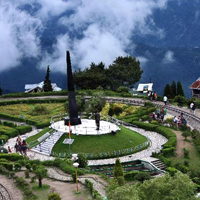 9D/8N
9D/8N
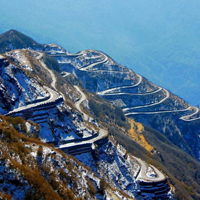 6D/5N
6D/5N
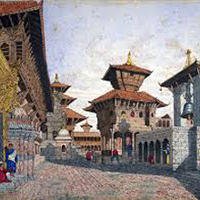 8D/7N
8D/7N
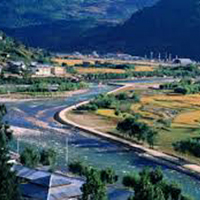 7D/6N
7D/6N
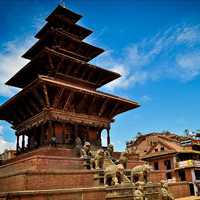 7D/6N
7D/6N
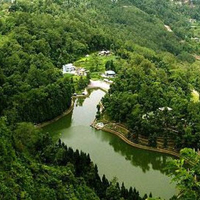 6D/5N
6D/5N
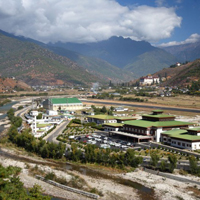 7D/6N
7D/6N
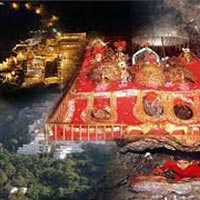 10D/9N
10D/9N
Srinagar - Anantnag - Patnitop - Jammu - Baramulla
 10D/9N
10D/9N
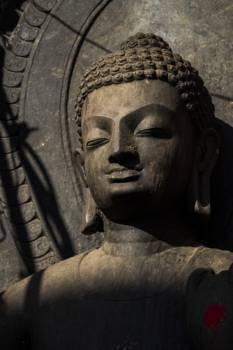 10D/9N
10D/9N
New Delhi - Varanasi - Bodhgaya - Rajgir - Nalanda - Patna - Vaishali - Kushinagar ..
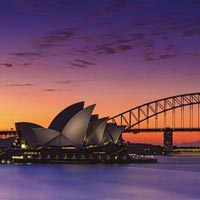 10D/9N
10D/9N
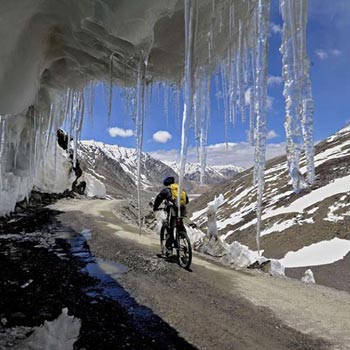 10D/9N
10D/9N
Kinnaur - Kaza - Spiti Romantic Package
Chandigarh City - Shimla - Kinnaur - Kaza - Digboi
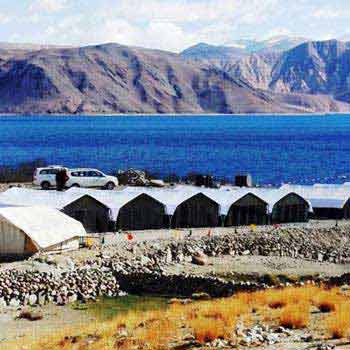 10D/9N
10D/9N
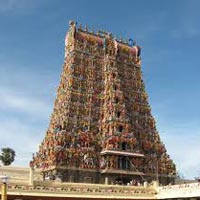 10D/9N
10D/9N
South India - Kerala & Tamil nadu- 9 N/1..
Kovalam - Munnar - Alleppey - Madurai - Kochi - Kumarakom Thekkady
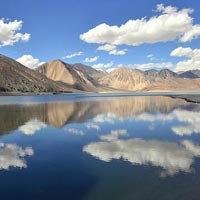 10D/9N
10D/9N
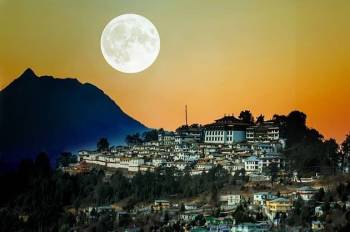 10D/9N
10D/9N
Tawang Kaziranga Shillong Tour
Guwahati - Shillong - Tawang - Kaziranga - Cherrapunji
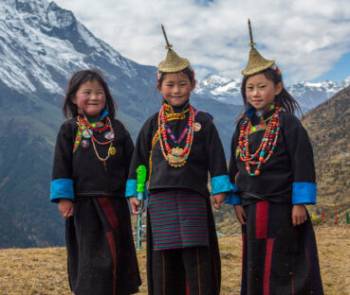 5D/4N
5D/4N
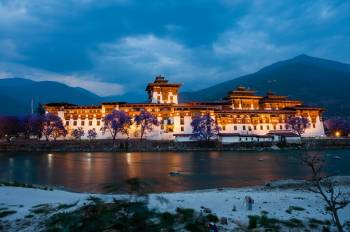 7D/6N
7D/6N
6 Nights/ 7 Days - Bhutan Happiness Tour
Punakha - Bumthang - Paro - Thimphu - Phobjik
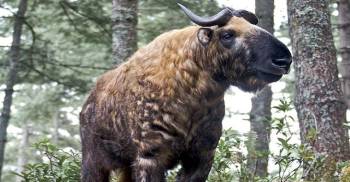 20D/19N
20D/19N
20 Days Land Package Country Tour BHUTAN..
Punakha - Paro - Phuntsholing - Bagdogra - Bumthang - Mongar - Trashigang - Trongsa..
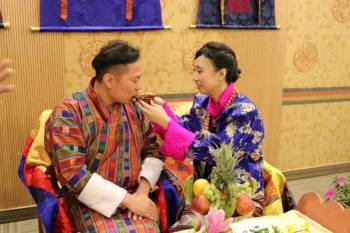 4D/3N
4D/3N
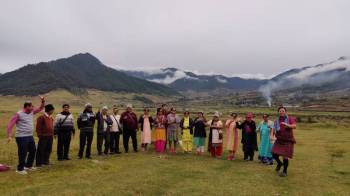 6D/5N
6D/5N
 7D/6N
7D/6N
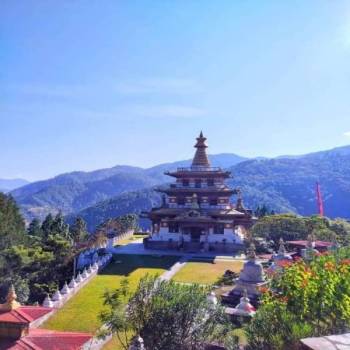 7D/6N
7D/6N
Rimso 7 Days 6 Nights Bountiful Tour fo..
Thimphu - Punakha - Paro - Phuentsholing
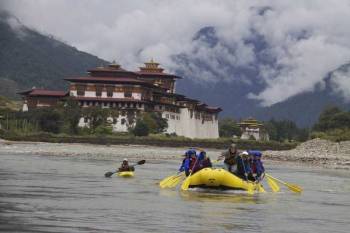 7D/6N
7D/6N
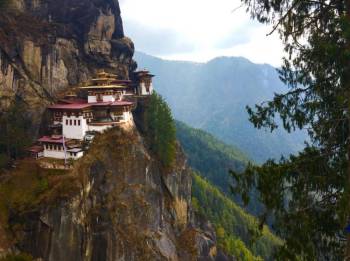 8D/7N
8D/7N
Jalpaiguri - Thimphu - Paro - Punakha - Phuentsholing